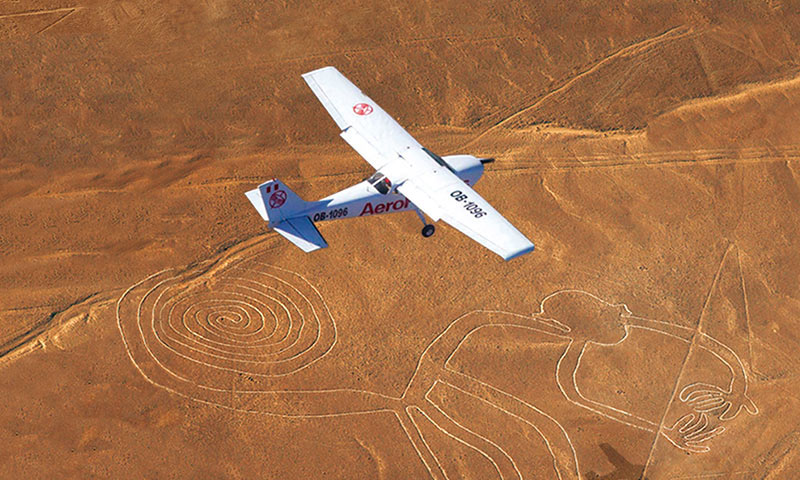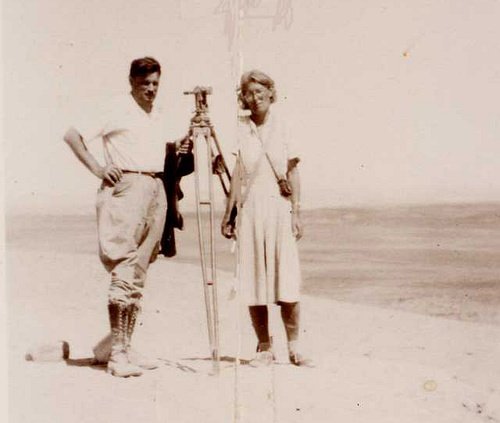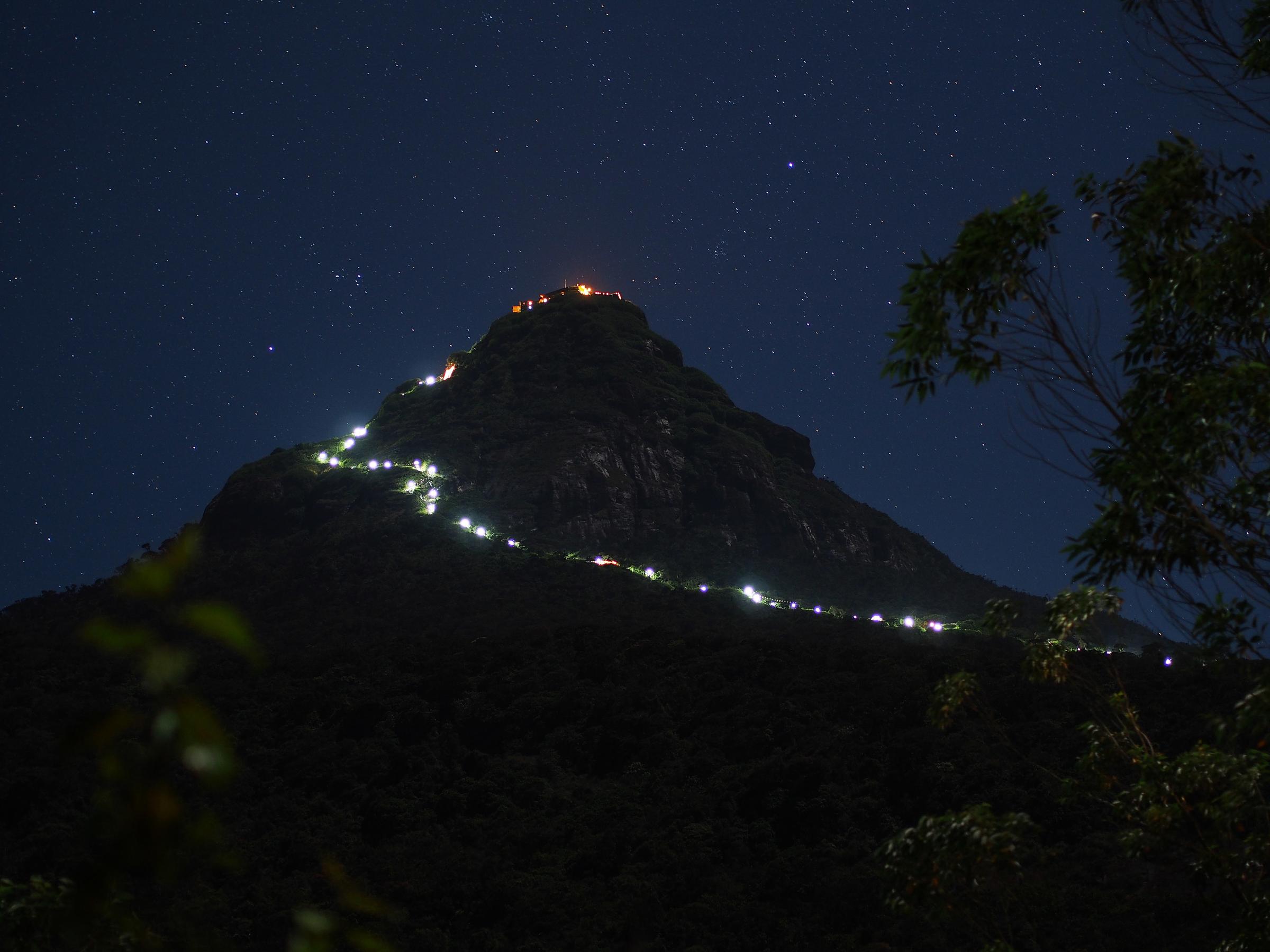ENIGMATIC DRAWINGS OF NAZCA

What purpose could they have served?
Lines and patterns depicting geometric, animal, bird and plant shapes have been drawn on the dry plains of southern Peru near the town of Nazca. These bewildering designs, visible from an aircraft and the surrounding foothills, have given birth to numerous suppositions and superstitions. Yet, despite all the research, no plausible explanation has been offered so far to unravel the mystery of the intricate designs, the existence of which was first mentioned by a Spanish chronicler in the 16th century.
Certain mysterious gigantic designs cut in the coastal desert floor, near the town of Nazca in southern Peru, have given archaeologists something to rack their brains over. These designs, known as geoglyphs, dating back to nearly 2000 years, have been created by scraping the rocky surface off the yellow subsoil to appear as straight and parallel lines, triangles, rectangles, quadrangles and trapezoids while spirals and zigzags form more distinct shapes of a monkey, a dog, a spider, a lizard, a whale, a hummingbird, a condor, and other birds. Another curious and inexplicable design concerns a slender rod with line and reel, similar to one used by fishermen.
The site of the world-renowned Nazca lines, which was declared a UNESCO World Heritage Site in 1994, is found over 300 km southeast of Lima, the capital of Peru. In total, there are more than 800 straight lines, 300 geometric figures and 70 animal, bird and plant designs, called biomorphs. Some of the furrows extend over a distance of nearly 50 km, crossing valleys and ravines and mountains, while the biomorphs range from 15 to 366 m in length. The new technology with drones has also helped discover the hitherto unnoticed figure of a relaxing cat when plans were underway to create a new path leading to an observation platform that would serve as a vantage point for visitors to see the geoglyphs. According to the Ministry of Culture in Peru, the figure was on the verge of disappearing owing to its existence on a steep slope prone to natural erosion.
The mention of the Nazca lines was first made by Pedro Cieza de León (1520-1554) in his book of 1553. Being a Spanish conquistador and chronicler of Peru, he described them as “trail markers”. Then, in 1586, Luiz Monzón reported having seen the “roads”. Although the crisscrossed lines were partially visible from the nearby hills, Peruvian military and civilian pilots were the first to report them in the 20th century.
In 1927 Peruvian archaeologist Toribio Mejía Xesspe spotted them while he was hiking through the foothills. He discussed them at a conference in Lima in 1939. His research led to the conclusion that the lines formed part of ancient sacred roads. Xesspe never flew over the area and so only saw the straight lines and failed to see the figures.
An astronomical calendar?
While Dr. Paul August Kosok (1896-1959), an American historian from Long Island University in New York, was in Peru from 1940-41 to study its ancient irrigation systems, he flew over the land and thus was afforded the opportunity to be the first to make an in-depth aerial examination of the lines. He chanced to see how lines converged on the horizon at the winter solstice in the Southern Hemisphere. The winter solstice occurs when either of Earth’s poles reaches its maximum tilt away from the sun and it happens twice each year. Kosok began to study how the lines might have been etched and he tried to fathom their meaning and purpose. Finally, he came to the conclusion that this unique area could be named as “the largest book of astronomy in the world”. According to him, the designs were laid in order to show the paths of the stars in such a way that the agricultural work of the year could be organised in due season.
Kosok also noticed that some of the radial centres were formed by small mounds, upon which vague structural outlines, undoubtedly of great antiquity, could be seen. No one knows whether they are contemporary with the linear tracings or they were built later to give the place a sacred character.
Kosok’s work was continued by Maria Reiche (1903-1998), the famous German-born Peruvian mathematician, archaeologist and technical translator, nicknamed the “Lady of the Lines”. She researched the desert drawings exhaustively for 40 years until her death, even taking up residence in a small house near the site to protect them single-handedly from reckless visitors. Reiche shared with Kosok, her predecessor, the theory of an astronomical calendar. Some Peruvian archaeologists too supported the Kosok-Reiche theory, but Johan Reinhard, a National Geographic Explorer-in Residence, debunked it in his book on the origin of Nazca Lines, claiming that the lines led to places where rituals were performed to obtain water and fertility for crops. He said that in such an arid region with so little rain, water was clearly an important factor. Most of the furrows are wide enough for a procession to pass along them which would suggest that they might have been used for ceremonial purposes, says French author Robert Charroux (1909-1978), a pioneer of the theory of ancient astronauts.

According to Reinhard, spiral designs have been found at other ancient Peruvian sites as well. Claiming that animal symbolism is common throughout the Andes, he argued that spiders are thought to be a sign of rain, hummingbirds are associated with fertility and monkeys are found in the neighbouring Amazon rainforest. (Peru has the second-largest portion of this rain forest after Brazil, comprising 60% of the country)
Johnny Islas, presently Peru’s chief archaeologist for the lines, says that the latest research indicates that the purpose of the lines was to ask the gods for water and fertility in this dry area. Anthony Francis Aveni (born in 1938), an American anthropologist and archaeoastronomer, agreed with Reinhard, saying that the straight lines and trapezoids are related to water.
The British-born American Astronomer Gerald Stanley Hawkins (1928-2003) used a computer in 1960 to check the astronomical interpretation of the Nazca patterns. The study proved that they were not designed as a celestial calendar.
An astroport for aliens: a crackpot theory?
Some people believe that the designs must have been made by unknown extraterrestrial beings in a remote past while others hold the view that the Nazca desert may have been used as an astroport by interstellar spacecraft thousands of years ago. Erich Anton Paul von Däniken (born in 1935), a Swiss author of several books (originally written in German and translated into English by Michael Heron) and a key figure for popularising the alien involvement in the culture and religion of early humans, suggested that the Nazca lines were the work of ancient astronauts. Däniken’s books attracted so many tourists to the Nazca region. But, the theories, expounded in his books, including the best-selling Chariots of the Gods – Was God an Astronaut?, published in 1968, have been rejected downright by both orthodox scientists and Christian theologians.
Hot air smoke balloons: Woodman’s theory
Jim Woodman, an American explorer in the 1970s, theorised that the Nazca people could have been the first inventors of hot air smoke balloons. He based his argument on the assumption that the geoglyphs could be sighted only from an aircraft and hence they could not have been drawn without aerial assistance. To support his theory Woodman cited pottery he had found in Nazca burial grounds that depicted hot air balloons. He also suggested that the Nazca people would have sent off their dead in these balloons to fall into the Pacific Ocean, which symbolically signified the journey of the deceased towards the Sun. Similar to the theories of Däniken, the suppositions of Woodman were debunked by experts. Firstly, they pointed out that the Nazca lines can be seen from the surrounding hills as well, as shown by archaeologist Xesspe. Secondly, the Nazca people, like the Incas, buried their dead without sending them off to a celestial destination. Thirdly, critics contended that the winds in the Andean region blow from west to east and so the balloons would not float towards the ocean, but crash instead onto the mountains.



No consensus of opinion so far
It is also presumed by some scholars that the Nazca people used to read the different weather signs from the flight patterns of seabirds. Native Indians of Peru still believe in the magical powers of animals and they see the shapes of these animals in the stars. A few theorists are of the view that the figures of the animals are reproductions of the shapes made by constellations. It is also theorised that the lines could have been the magical religious cult expressed in a theatrical ritual.
Still others conjecture that they were places of assembly or of astronomical observation. According to some, the region would have been a ground, guided by the spirits. Burnt offerings were made to the Nazca gods there, suggest others. Yet, no one has come to a single platform for a common agreement. The Nazca etchings, a striking testimony to Peru’s rich pre-Columbian heritage, still remain one of the world’s greatest archaeological conundrums.
Today the Nazca region is also crossed by the 30,000 km long Pan-American Highway, stretching from Chile to Alaska. The government of Peru has banned walking or driving over the Nazca area except by special permission. Yet, the encroachments over the years into the protected Nazca area by squatters raising pigs, were reported to be endangering the geoglyphs.
Since the 2000s, tourism in Peru makes up its third largest industry next to fishing and mining. Tourism is the most rapidly growing industry there and it is growing faster than any other country in South America. ***







